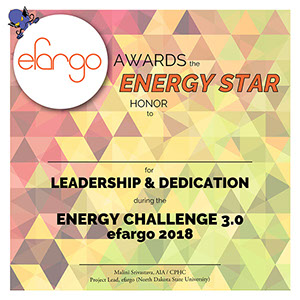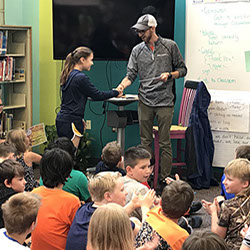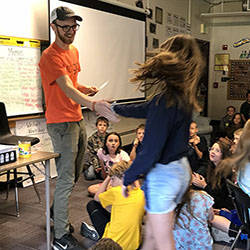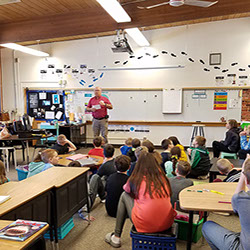catalogs
classes
event
gallery
habitat
passive
house
top ten
efargo challenges local K12 schools to defeat Waste-a-Watt. The goal of this competition is to educate K-12 students about energy use and empower them to make positive changes for the environment and their community through their knowledge and creativity. Schools that competed this year had a classroom vs. classroom focus where activities and engagement were the key to winning the competition.
K12 Challenge 3.0
RESULTS
This year's challenge had a focus on a classroom vs. classroom mentality. Each classroom had the ability to earn points based on the actions done as well as the amount of people doing that activity.
Awards were given to classrooms for specific things that they excelled in. These plaques were given in response to each classes efforts in the Energy Challenge.
Teachers nominated specific students that stood out as ones who took initiative in the challenge and were recognized for the above and beyond efforts. Each student was also given a spruce seedling for their participation!


GALLERY
OTHER GAMES
Climate
Change
Saving at
Home
Renewable Energy Sources
GAME PLAY RESOURCES
City of Fargo
Municipal
Energy Use
Energy-Use Breakdown in K-12 Schools by source
Local Learning Resources















